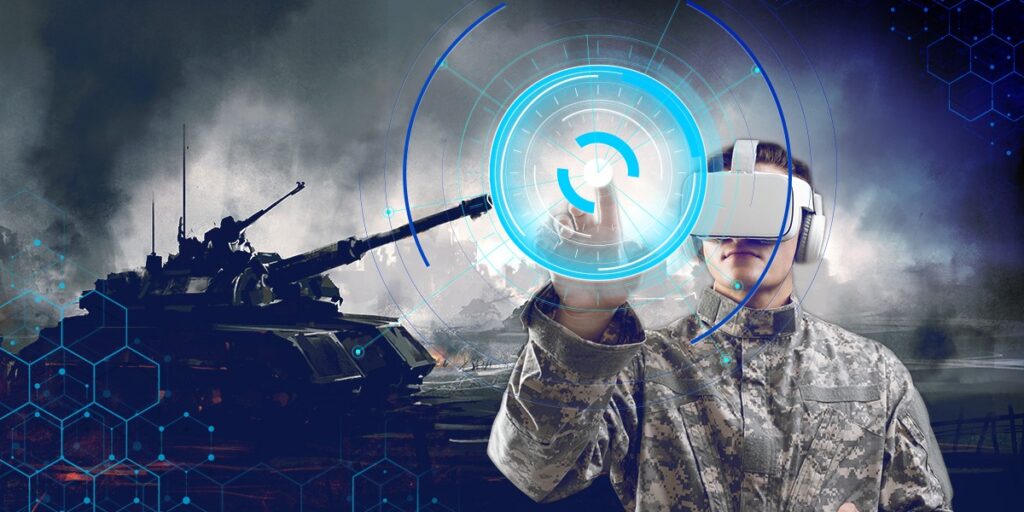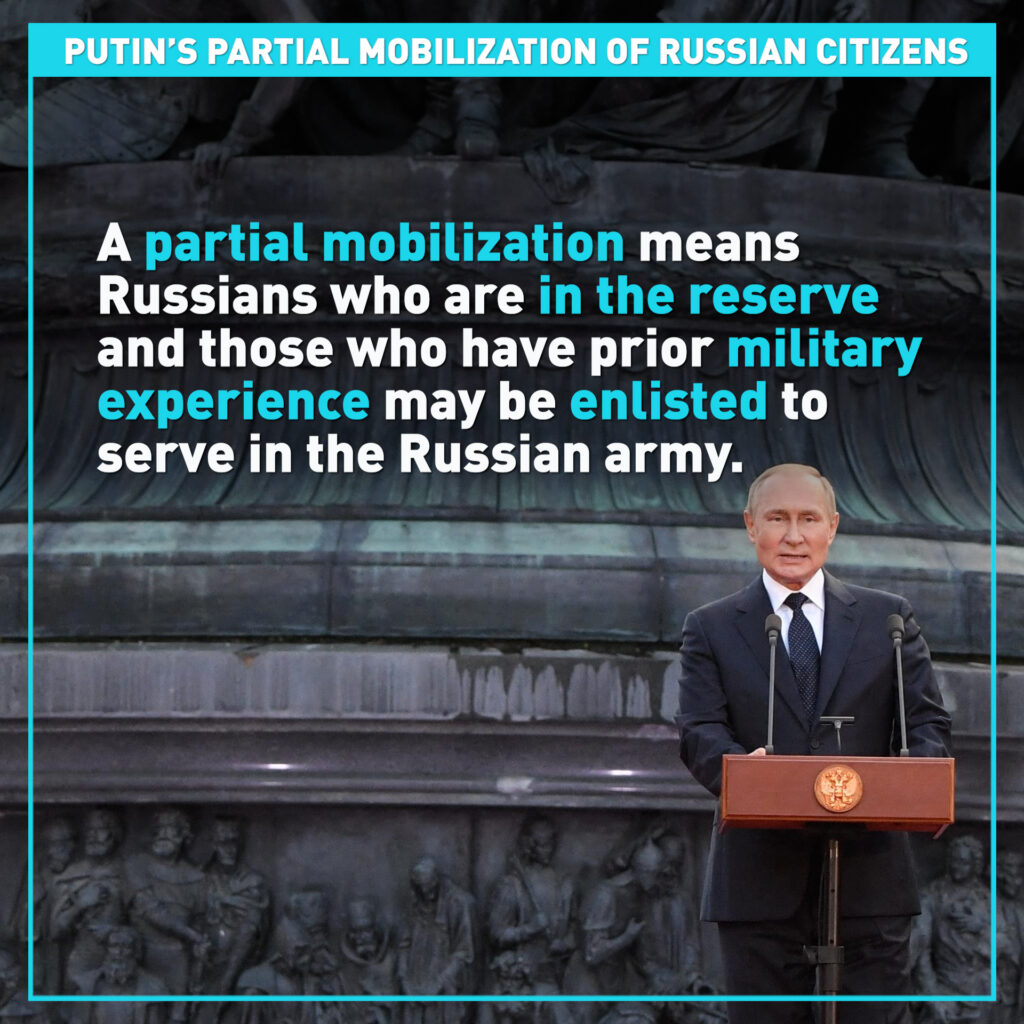The U.S. military has constantly engaged in upgrading its prowess by improving its technology for the artillery and also the technology to draw out tactical war strategies. Despite a flood of media attention, artificial intelligence in military operations is really just at the cusp but now exponentially driven by the war in Ukraine. But it is a meticulous sector that needs to be careful on all fronts.
I have a series of posts in the pipeline to show how AI increases military prowess in combat operations. This is the first.
And I’ll end with a brief “postscript” : just a few thoughts on Putin’s orders for a partial mobilization of Russian military for combat in the Ukraine.

22 September 2022 (Malta) – As I have noted in several posts in this series on the Ukraine War, there are various AI solutions which have been successfully used by Ukraine on the battlefield to detect, identify and further destroy ground, air, sea objects and targets, including aircraft, cruise missiles, ships, weapons and equipment, military equipment and weapons. These are systems provided primarily by the U.S. and Great Britain, but as I have discovered some very sophisticated AI has been provided by the Baltic States, Poland and Sweden. I will get into more detail in subsequent posts.
And there are also some solutions and platforms of various functionalities with the embodiment of “artificial intelligence” from Ukrainian developers, which are already used, but not yet widely presented in serial production (various types of drones and anti-aircraft missile systems).
NOTE TO READERS: Ukraine has also been using the capabilities of artificial intelligence to identify servicemen who take part in the war and link this data to social media accounts or other means of communication with Russian citizens.
This is all just the tip of a very complex area. Artificial intelligence is being used in systems for:
• collecting, processing and analyzing information
• command and control
• missile and air defense
• military communication systems
• in intelligent ammunition, which are able to independently identify the target and determine the trajectory of the flight
• sights and devices for displaying optical electronic information
• to identify persons and determine the location and diagnosis of the condition of servicemen
• countering cyber threats
• analysis of the capabilities of units
• automation and optimization of logistics systems
• during demining
• robotics
• meteorological systems, to take into account weather conditions when planning military operations
The U.S. military is now adding an AI task: developing machine-learning algorithms to predict Ukraine’s ammo and repair needs, rather than just react to them. But this is really part of an older, longer term problem. According to the Defense Department’s inspector general “the Pentagon isn’t doing enough to keep track of what’s going where across the world”. The Ukraine element is a joint operation where officials from the U.S., Britain, Ukraine, and a dozen other countries track the transfer of donated weapons and supplies, right down to individual bullets, as described in a Defense One briefing on Monday. The joint operation is called the “International Donor Coordination Center”, or IDCC, and it works like this:
• The process begins with a request from the Ukrainian Defense Ministry for, say, armored vehicles or bullets. IDCC officials check to see if there’s a donor country or entity that has the item. The coalition officials then design a process to get that materiel to Ukrainians, who then take it over the border. Along the way, the coalition officials document what was requested, what was donated, and what was received.
• The requests also allow the IDCC to calculate and track how quickly the Ukrainians are using up materiel. Understanding their usage rates is important to understand how quickly they need to be replaced.
• The IDCC also works security issues, such as when an arms shipment from Macedonia was picked up on social media. Officials adjusted the timing of the shipment to avoid drawing public attention. They said that while some of the shipments were very conspicuous at first—think armored vehicles on flatbed trucks—the shipments have since become much harder for the outside world to detect. IDCC officials have figured out ways to ship items without flight numbers or other tracking indicators that might tip off Russian intelligence trying to intercept or destroy the aid in transit.
• The requests from the Ukrainians for more supplies are both constant and urgent. That’s partially why the next step is take the large amounts of data that the coalition is collecting and develop AI-driven techniques to anticipate those needs ahead of time, rather than just respond as they come in
NOTE TO READERS: Yes, there is an analogy. It’s the sort of thing big companies like Amazon do to ensure they can meet demand. But large retail outfits have a few advantages that the IDCC does not. They can add sensors to shipments to get a complete data picture. The IDCC is planning to work around this shortfall by developing predictive models from existing data. Because for those of you who work a lot with data, you know you can start to see failure rates and break-down rates once you get enough of that data in. So IDCC could actually build that model without having to invest in sensors.
Knowing when an item might break is key to knowing when to ask for a replacement. These models to predict Ukrainian needs were actually in development and it is expected that they would be in place by year’s end. That sort of predictability could make a vital difference to Ukraine and its allies as they seek to make sure that Ukraine can continue to accept aid and fight through next year and beyond. It might also help to satisfy some of the concerns from lawmakers and others on accountability for the aid that’s been given and asked for.
But there are some big differences between how the IDCC tracks and keeps data for its operations and how the Defense Department Inspector General would prefer it to do so. In July, the DOD Inspector General’s office said the Pentagon wasn’t using the year-old analytics hub (called “Advana”; see below) that’s supposed to simplify the gathering and sharing of data. Instead, the Defense Department was using journal vouchers. I have not parsed the entire redacted version of the report distributed to press but one key paragraph in the executive summary jumped out:
The use of summary journal vouchers is a concern because journal vouchers have the potential to limit the transparency of the funds, particularly if the summary journal vouchers do not trace back to the supporting transactions details. The Defense Department must follow its own rules on accounting procedures, and should be the only source for reporting the Ukraine supplemental funds and DoD Components distribution”.
And “Advana”? How do you create a unified view of data for the largest operating budget in the world? This was the challenge facing the U.S. Department of Defense with an operating budget that is comprised of thousands of business and accounting systems, which relies on large flows of data from many external systems and sources. Today, the DoD’s strategy as a data-centric organization means prioritizing data interoperability as a key requirement and putting that data to work to solve its most complex challenges. The DoD uses something called “Advana”, a central hub for advanced analytics, and it is a Master Class in how to build a model data-powered organization. It needs a separate post.
For now, the IDCC is building AI models to get all the data it can as quickly as it can get it, rather than run it through some analytics platform like Advana before they can see and execute on requests. They will eventually merge. But for now the preference is to be able to take that information directly from the source to go and drive the decision making process instead of taking it out of the system to somewhere else to work something else to be fed to them.
POSTSCRIPT

On Wednesday, Vladimir Putin dramatically upped the ante, at least inside Russia, by ordering the partial mobilization of as many as 300,000 reservists for the war in Ukraine. Full mobilization would extend beyond reservists to millions of ordinary citizens.
There’s a lot of fine print in Putin’s new plan, but here are the main takeaways:
• Ukrainians and their Western allies are not impressed. They know that it will take Russia months to train new soldiers, even those with previous combat experience, and there won’t be enough equipment for that number of new troops. The Institute for the Study of War (the U.S.-based think tank that I frequently quote because it has excellent OSINT sources and closely tracks the war in Ukraine from all sides and has the most unbiased information) said Russia has more than 2 million reservists, including former conscripts and contract soldiers. However, few are actively trained or prepared for war. Only about 10 percent of them receive ongoing training after they complete their basic military service.
• Ukraine has signaled defiance, and Western leaders, including President Joe Biden at the UN on Wednesday, have made clear they will not ease pressure on Putin’s government or military.
• Russians, on the other hand, take this move very seriously. Hundreds, perhaps more, have already been arrested in protests across Russia, and there are new signs that yet another wave of draft-age men are looking for ways to leave Russia. Yesterday the Russia/Finland border crossing was backed up 35 miles. In Moscow, every flight heading to any available EU country (many closing their borders to Russians) was overbooked.
• Putin did not order the full mobilization that some feared during his televised speech. But given the news that the “special military operation” has suffered setbacks and the visibly hasty Kremlin response to Ukrainian advances, many Russians will (reasonably) worry that more men will be handed a rifle and pointed toward Ukraine in the not-too-distant future.
• In a move likely to inflame tensions within Russian society, the head of the Russian parliament’s defense committee, Andrei Kartapolov, said the geographic distribution of reservists would be based on population size, meaning that the most populated regions of the country, including the capital, Moscow, would have to send the highest number of soldiers. “Each [region] of the Russian Federation receives a distribution order based on its capabilities,” Kartapolov said Wednesday.
Bottom line: in the short term, the partial mobilization of reservists and new measures to forcibly extend the contracts of volunteers currently serving in Ukraine could be enough to prevent a collapse of Russian forces. Otherwise, Russia’s manpower issues could have become catastrophic this winter when many short-term volunteers likely would not sign another contract.
But the war will now increasingly be fought on the Russian side by people who do not want to be there, likely fueling a lack of morale and unit cohesion among Russian forces. Reserves are essential components to many countries’ war efforts. For example, nearly half of U.S. service members deployed to both Afghanistan and Iraq over the past 20 years reportedly came from the National Guard and reserves, and those groups took about 18 percent of the casualties.
Russia’s reservists are not nearly as well organized as the U.S. National Guard and reserve troops, according to Dara Massicot, a senior policy researcher with the RAND Corporation who was in the Defense One webinar this morning. She said:
“They’re calling them up out of cold storage, basically. Moscow is facing a significant troop shortage, despite recent recruitment efforts that have included enlisting prisoners and sending volunteers to the front lines with little training. Putin likely hopes to improve Russian force generation capabilities by calling on the Russian people to volunteer for a war to ‘defend’ newly claimed Russian territory. I do not see Russians rising to the call”.